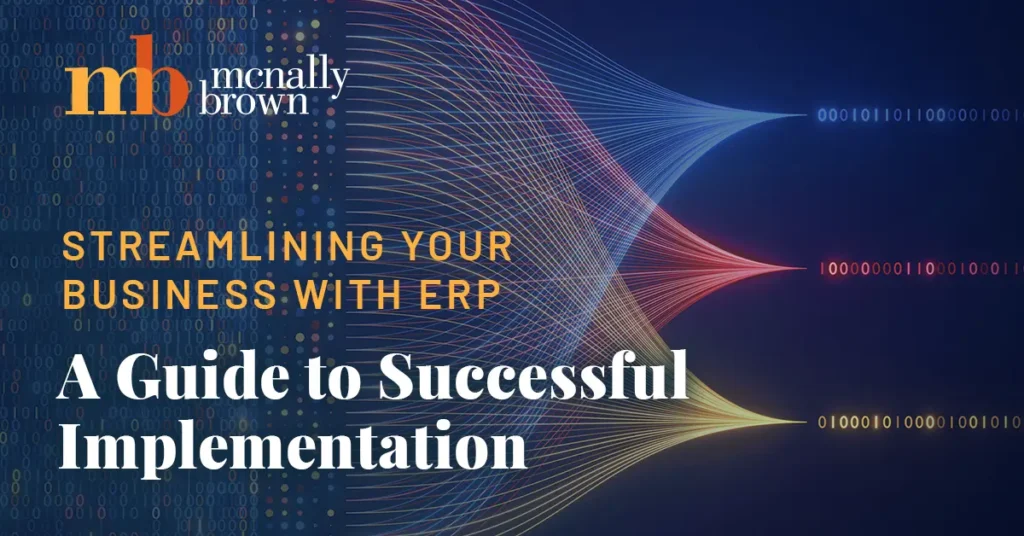The Power of a Clear Strategy
Unlocking Success for Your Business
MAY 3, 2025 // 5 MIN READ
Does your business have a clear strategy? And if you were to ask your leaders what that strategy is, would you hear consistent answers? If the answer is “no,” your business might be missing a critical piece of the puzzle when it comes to sustained success.
In today’s competitive market, having a clear and actionable strategy is essential for any organization. But what makes companies truly successful? It’s not just about being in the right market or having a great product or service. Successful businesses share core characteristics, such as strong values, clear purpose, a compelling vision, and a strategy that bridges the gap between the present and their long-term goals.
What Makes Companies Successful?
Core Values and Purpose as the Foundation
Core values and purpose are the steady foundation of a successful business, guiding decisions and providing stability amid changing market conditions. Defining core values and purpose requires reflection to understand what your business truly stands for. When everyone aligns with them, it strengthens culture and lays the foundation for growth.
A Vision That Looks 10+ Years Ahead
Successful companies think long-term, crafting a bold vision that looks beyond current capabilities to future possibilities. This creative process aligns the organization around a shared goal and, while inspiring, requires focused effort, strategic planning, and strong alignment to achieve.

Translating the Vision into a Clear Strategy
Translating a vision into an actionable strategy requires both analysis and creativity. Engaging business owners and key leaders ensures a clear understanding of the company’s current position and builds alignment and support for the plan.
Understanding Your Position

External Analysis
Evaluate customers’ needs, competitive forces, and broader market factors like political, economic, social, and environmental influences.

Internal Analysis
Evaluate your company’s financial performance, customer base, services, strengths, weaknesses, opportunities for growth and improvement.
Creating A Roadmap for Success
A clear strategy serves as a roadmap, guiding a company from its current state to its desired future over the next 3-5 years, while staying aligned with the long-term vision.
One of the most effective ways to build alignment around a strategy is by developing a clear strategy statement that includes:
Objective
A clear, measurable goal with an end point with a set time frame (e.g. five years).
Scope
The customer segments, geography, offerings the company will focus on.
Advantage
The company’s unique value, where its strengths meet customer needs in a way that competitors can’t match.
Once the strategy is defined, set clear financial targets and strategic objectives across areas such as market share, customer satisfaction, internal processes, digital transformation and employee engagement. Objectives need to be prioritized, focused, and challenging, but not unrealistic.
Turning Plans into Reality
A strategy is only as good as its execution, once it’s developed, it’s time to put it into action.
Effective Communication is Key
Successful strategy execution requires a shared understanding and support of the vision. Clear communication across teams and departments builds support and alignment.
Defining Roles and Responsibilities
Clear roles and responsibilities are essential for execution. Leaders need to ensure that the right resources are in place and bring in external expertise when internal capabilities fall short.
Change Management and Adaptability
As you progress, initiatives like digital transformation or product launches require strong change management, guided by clear communication, planning, and training for smooth execution.
Tracking Progress and Accountability
To stay on track, regularly review progress, revisit objectives annually and adjust when necessary. Align performance management with strategic objectives to drive long term success.
Final Thoughts
A clear strategy is crucial, but it’s not a one-time effort. It requires ongoing reflection, adaptation, and strong leadership to turn plans into reality. By focusing on your company’s core values and purpose, defining a compelling vision, and developing a strategy that aligns with both the current market and future opportunities, you can set your business on a path to long-term success.
Remember, execution is where the magic happens. Ensure that your team is aligned, responsible, and motivated, and that your strategy evolves to meet new challenges. By staying committed to your vision and strategy, your business will be well-positioned for success in the years to come.
About the Authors
Colin and Laura founded McNally Brown Group in 2012. They both have engineering backgrounds and are graduates of the Richard Ivey Executive MBA Program. Colin and Laura bring complementary expertise, a balance of hands-on experience, technical training, family business knowledge, and international experience to clients.
Explore Related Resources to The Power of a Clear Strategy: Unlocking Success for Your Business

Unlocking Growth: Digital Transformation for Small and Mid-Sized Businesses
Digital transformation is critical for small and mid-sized businesses (SMBs) to stay competitive and improve business performance. Adopting technology to better serve customers, improve processes and enhance efficiency can be a real competitive advantage. Here’s how SMBs can develop and execute a strategy for successful transformation.

Streamlining Your Business with ERP: A Guide to Successful Implementation
Many small to mid-sized businesses struggle with efficiently managing data and using it for informed decision-making. Information is often scattered across departments and formats, such as spreadsheets, accounting systems, and specialized software, making compilation and reporting time-consuming. The solution frequently involves implementing a new software platform, and many companies opt for an Enterprise Resource Planning (ERP) system.


